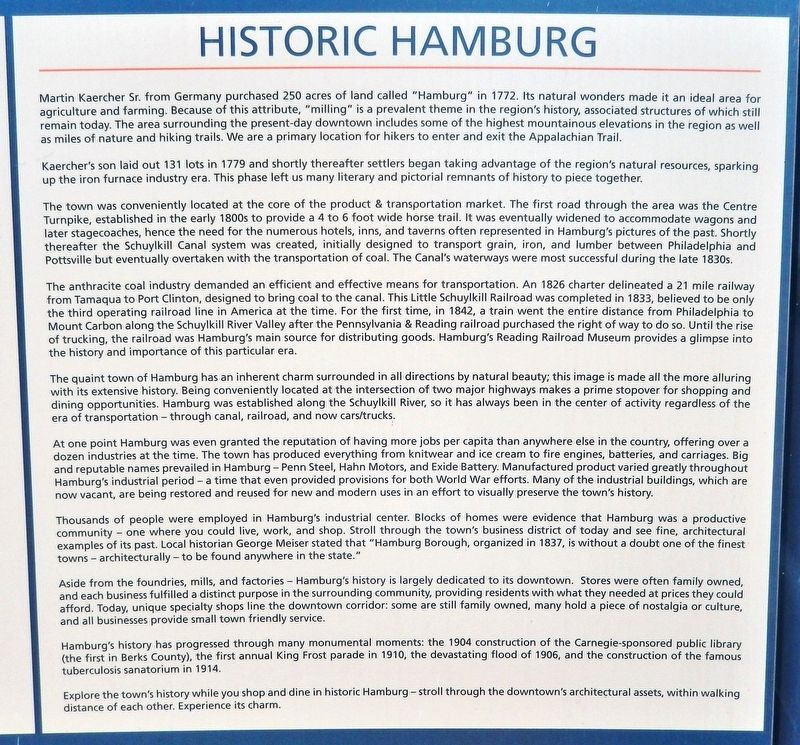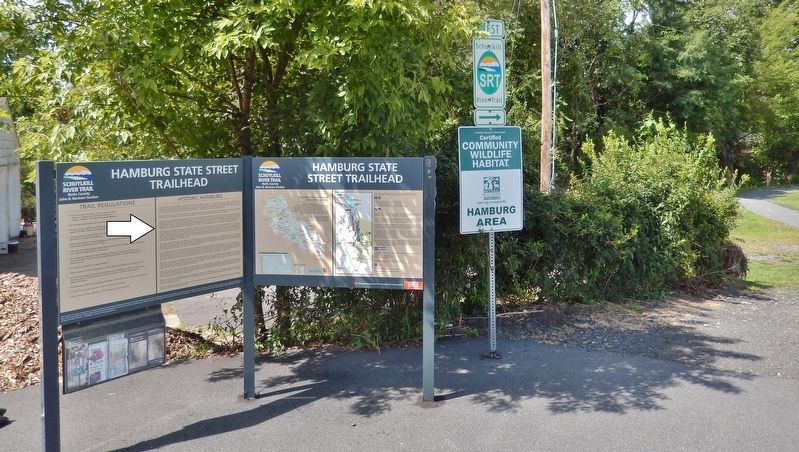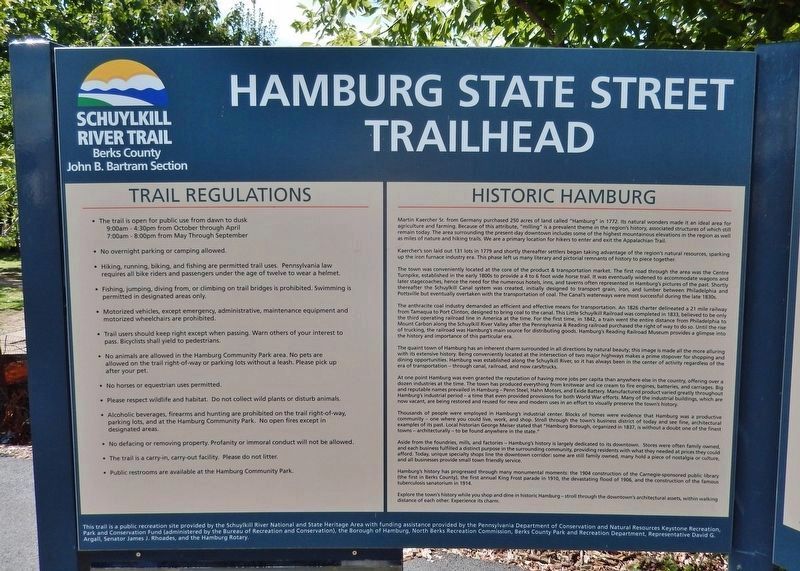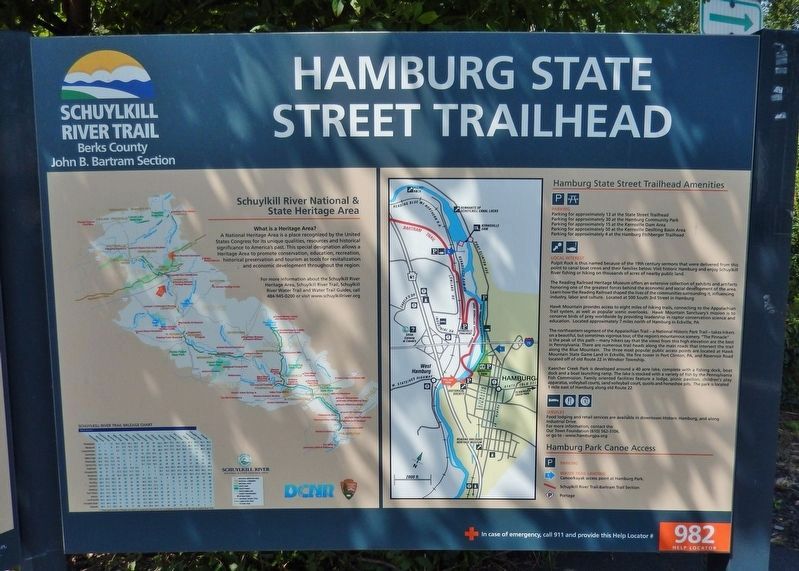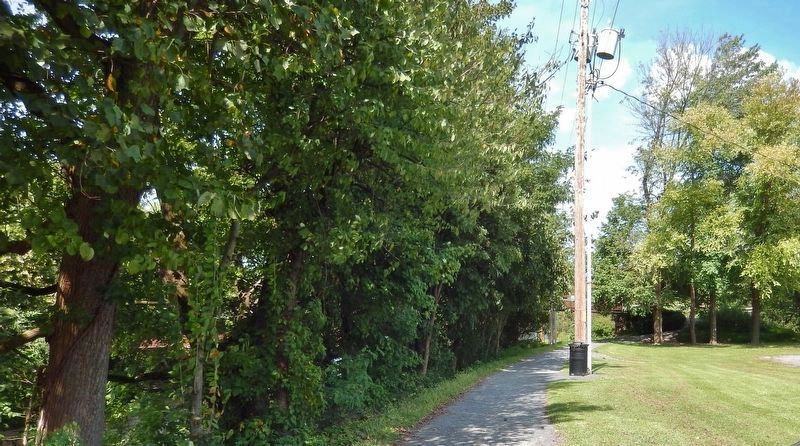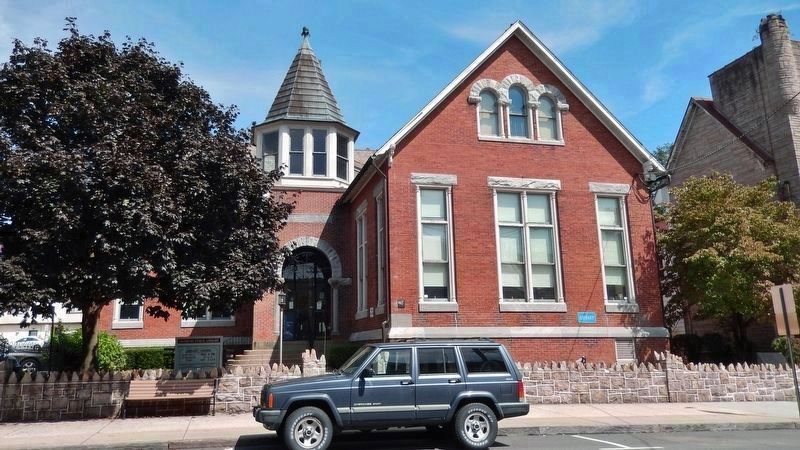Hamburg in Berks County, Pennsylvania — The American Northeast (Mid-Atlantic)
Historic Hamburg
Kaercher's son laid out 131 lots in 1779 and shortly thereafter settlers began taking advantage of the region's natural resources, sparking up the iron furnace industry era. This phase left us many literary and pictorial remnants of history to piece together.
The town was conveniently located at the core of the product & transportation market. The first road through the area was the Centre Turnpike, established in the early 1800s to provide a 4 to 6 foot wide horse trail. It was eventually widened to accommodate wagons and later stagecoaches, hence the need for the numerous hotels, inns, and taverns often represented in Hamburg's pictures of the past. Shortly thereafter the Schuylkill Canal system was created, initially designed to transport grain, iron, and lumber between Philadelphia and Pottsville but eventually overtaken with the transportation of coal. The Canal's waterways were most successful during the late 1830s.
The anthracite coal industry demanded an efficient and effective means for transportation. An 1826 charter delineated a 21 mile railway from Tamaqua to Port Clinton, designed to bring coal to the canal. This Little Schuylkill Railroad was completed in 1833, believed to be only the third operating railroad line in America at the time. For the first time, in 1842, a train went the entire distance from Philadelphia to Mount Carbon along the Schuylkill River Valley after the Pennsylvania & Reading railroad purchased the right of way to do so. Until the rise of trucking, the railroad was Hamburg's main source for distributing goods. Hamburg's Reading Railroad Museum provides a glimpse into the history and importance of this particular era.
The quaint town of Hamburg has an inherent charm surrounded in all directions by natural beauty; this image is made all the more alluring with its extensive history. Being conveniently located at the intersection of two major highways makes a prime stopover for shopping and dining opportunities. Hamburg was established along the Schuylkill River, so it has always been in the center of activity regardless of the era of transportation - through canal, railroad, and now cars/trucks.
At one point Hamburg
was even granted the reputation of having more jobs per capita than anywhere else in the country, offering over a dozen industries at the time. The town has produced everything from knitwear and ice cream to fire engines, batteries, and carriages. Big and reputable names prevailed in Hamburg - Penn Steel, Hahn Motors, and Exide Battery. Manufactured product varied greatly throughout Hamburg's industrial period - a time that even provided provisions for both World War efforts. Many of the industrial buildings, which are now vacant, are being restored and reused for new and modern uses in an effort to visually preserve the town's history.
Thousands of people were employed in Hamburg's industrial center. Blocks of homes were evidence that Hamburg was a productive community - one where you could live, work, and shop. Stroll through the town's business district of today and see fine, architectural examples of its past. Local historian George Meiser stated that "Hamburg Borough, organized in 1837, is without a doubt one of the finest towns - architecturally - to be found anywhere in the state."
Aside from the foundries, mills, and factories - Hamburg's history is largely dedicated to its downtown. Stores were often family owned, and each business fulfilled a distinct purpose in the surrounding community, providing residents with what they needed at prices they could
afford. Today, unique specialty shops line the downtown corridor: some are still family owned, many hold a piece of nostalgia or culture, and all businesses provide small town friendly service.
Hamburg's history has progressed through many monumental moments: the 1904 construction of the Carnegie-sponsored public library (the first in Berks County), the first annual King Frost parade in 1910, the devastating flood of 1906, and the construction of the famous tuberculosis sanatorium in 1914.
Explore the town's history while you shop and dine in historic Hamburg - stroll through the downtown's architectural assets, within walking distance of each other. Experience its charm.
Erected by Schuylkill River National and State Heritage Area and the Borough of Hamburg.
Topics. This historical marker is listed in these topic lists: Industry & Commerce • Railroads & Streetcars • Roads & Vehicles • Settlements & Settlers. A significant historical year for this entry is 1772.
Location. 40° 33.264′ N, 75° 59.338′ W. Marker is in Hamburg, Pennsylvania, in Berks County. Marker is on Front Street north of State Street (Old U.S. Highway 22), on the left when traveling north. Marker is part of an informational kiosk at the northwest corner of the Schuylkill River Trail Hamburg
State Street Trailhead parking lot. Touch for map. Marker is at or near this postal address: 25 State Street, Hamburg PA 19526, United States of America. Touch for directions.
Other nearby markers. At least 8 other markers are within 6 miles of this marker, measured as the crow flies. State Street Bridge (within shouting distance of this marker); Geiger's Mill (within shouting distance of this marker); Richard L. Etchberger (about 600 feet away, measured in a direct line); 4th & Pine circa 1800's (approx. 0.4 miles away); Martin Kaercher Jr. (approx. half a mile away); War Memorial (approx. half a mile away); Hawk Mountain Sanctuary (approx. 5˝ miles away); a different marker also named Hawk Mountain Sanctuary (approx. 5.6 miles away). Touch for a list and map of all markers in Hamburg.
Also see . . .
1. Hamburg, Pennsylvania (Wikipedia). Hamburg was officially founded in 1787, named after the "German Hamburg" due to the largely German population of the region. On July 1, 1798 Hamburg became the second town with postal designation in Berks County, preceded only by Reading. (Submitted on August 29, 2019, by Cosmos Mariner of Cape Canaveral, Florida.)
2. Hamburg Public Library (Wikipedia). It was designed and built in 1903-1904, with funds provided in part by the philanthropist Andrew Carnegie. It is one of 3,000 such libraries constructed between 1885 and 1919. The building is an "L"-shaped, 1 1/2-story, brick structure in the Romanesque Revival style. (Submitted on August 29, 2019, by Cosmos Mariner of Cape Canaveral, Florida.)
Credits. This page was last revised on August 29, 2019. It was originally submitted on August 28, 2019, by Cosmos Mariner of Cape Canaveral, Florida. This page has been viewed 620 times since then and 57 times this year. Photos: 1, 2, 3, 4, 5. submitted on August 28, 2019, by Cosmos Mariner of Cape Canaveral, Florida. 6. submitted on August 29, 2019, by Cosmos Mariner of Cape Canaveral, Florida.
